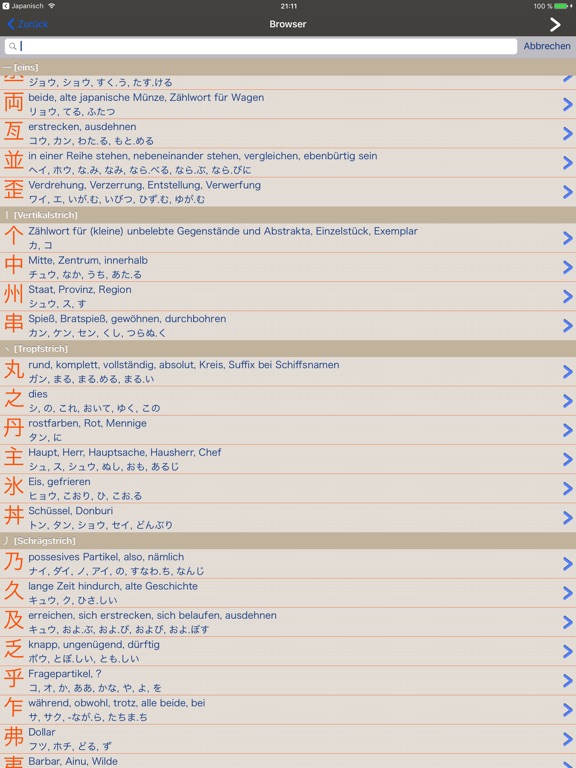
- IKANJI TOUCH APP VERSUS WANIKANI UPDATE
- IKANJI TOUCH APP VERSUS WANIKANI UPGRADE
- IKANJI TOUCH APP VERSUS WANIKANI FULL
- IKANJI TOUCH APP VERSUS WANIKANI SOFTWARE
- IKANJI TOUCH APP VERSUS WANIKANI FREE
I wouldn’t necessary call this a good or a bad thing–it’s just another way of teaching–but I don’t always like having to deduce what I’m learning. The vast majority of learners probably won’t even realize that katakana is a totally different writing script, which is a little worrying.ĭuolingo goes a step further and tosses in a kanji for good measure, just in case you weren’t already blissfully unaware that you’ve now encountered 4 different writing scripts. A little confusing, considering there’s zero explanation for this second character set. We also see the introduction of katakana, which gets mixed in with the hiragana we’ve been learning. Neat!ĭuolingo begins introducing some basic vocabulary words: vegetables, alcohol, our first verb (“to read”), and certain times of day. We finally learn our first phrase: “Good morning.”Īll right, now we can greet someone in Japanese. Multiple choice really doesn’t do learners any favors in terms of retention.

We begin by learning numbers through hiragana. Apparently, Duolingo considers 20 minutes of studying per day “insane.” I see where this is going. Upon opening Duolingo and selecting Japanese, I’m greeted with this screen. There’s a lot to unpack here, so let’s look at what’s covered in the course. And best of all, it’s free.īut is it actually going to help you learn Japanese? With millions of users and an offering of nearly 20 languages (with another half-dozen in development), Duolingo is one of the most popular language learning apps on the market today. I hope to get it submitted for review by Monday and it should be on sale before Christmas with any luck.It’s been a long time coming, but the Japanese for English speakers course is finally available on Duolingo.

their useful value I think a few extra dollars now and then is far preferable and maintains the best possible user experience. I think given the insignificant cost of apps like iKanji touch vs. I’m sure some people prefer to pay nothing and see ads and that’s fine, I just don’t want to take that approach.
IKANJI TOUCH APP VERSUS WANIKANI FULL
I don’t use any ad supported applications myself and I don’t like the idea of putting them in my apps full stop. Some apps make decent money by showing ads it’s true – however I don’t like the idea of ads appearing in a paid app. The benefit of doing things this way is you can pick and choose the new features as and when you want them.
IKANJI TOUCH APP VERSUS WANIKANI UPGRADE
In an ideal world we’d just have a paid upgrade (with discount for existing customers) but sadly Apple doesn’t seem interested. The Extras are icing on the cake – useful additional features that may benefit some people. You don’t – the core functionality of iKanji touch should offer everything you need in a kanji study tool. But I just bought iKanji touch, why do I have to pay more? Bug fixes and general maintenance releases will of course be free.
IKANJI TOUCH APP VERSUS WANIKANI FREE
No – I’ll keep adding new features over time, some of them will be free and some will be paid. Does this mean every new feature will cost me more?
IKANJI TOUCH APP VERSUS WANIKANI UPDATE
Offering new features by In App Purchase (IAP) is the next best option after being able to do a proper paid update for existing customers. Most of the options for releasing a major new version of an app and charging for it suck for existing customers and developers alike. It’s a key reason why you’ll find so many abandoned apps on the store that no longer receive updates. This is a problem for many developers who want to offer on-going support for their apps after the initial sales have died back. However, for good or bad Apple has decided that paid upgrades aren’t allowed on the App Store. To make future work on iKanji touch financially viable for me I need to put out a paid upgrade. iKanji touch has done well and the huge growth of the iOS market has helped to slow this gradual decline for quite awhile but it’s starting to catch up with us now.
IKANJI TOUCH APP VERSUS WANIKANI SOFTWARE
The typical way software sells is that when you put out a new paid version you see an initial sales spike that slowly trails off over time.


This is intended as a way to be able to offer cool new features while continuing to make working on iKanji touch financially viable. The new version of iKanji touch will introduce In App Purchase for the first time in the form of the Extras store.


 0 kommentar(er)
0 kommentar(er)
